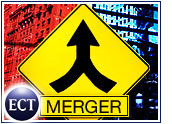
While in Manhattan recently, I spoke with several investment bankers and Securities and Exchange Commission attorneys about the future of reverse mergers and PIPEs (private investments in public equity). Considering the plight of the economy and the swings in the financial markets, the general consensus was remarkably positive. Reverse mergers have become increasing global over the last three years, and they are now starting to attract investors that previously shied away from such deals.
Though U.S.-based companies still represent two-thirds of the number of reverse mergers each year, we are now seeing deals originating out of what is commonly referred to as the “BRIC countries” — Brazil, Russia, India and China. There have also been some new entries from Vietnam and Korea.
These deals come with both substantial upside and downside risks. This is relatively a new game, and only a few investment bankers like Ventana Capital Partners have learned how to structure the deals and subsequent financings to mitigate most of the downside risk associated with foreign deals and to protect those who are writing the checks to fund these deals.
Different Mindsets
Foreign and U.S.-based companies have two entirely different mindsets when it comes to their valuation and capitalization. U.S. companies have a tendency to believe that their corporations are worth far more than the marketplace will allow. This does not bode very well with PIPE investors, and I find myself constantly shaking my head, wondering what kind of Kool-Aid the company’s officers and directors were drinking when they decided on a market cap.
On the other hand, the first thing a foreign company wants to know is how it should value itself so it can move from the OTCBB (Over-the-Counter Bulletin Board) to listing on NASDAQ (National Association of Securities Dealers Automated Quotation System). The main goal of most foreign companies is to achieve a NASDAQ listing within 12 months.
Management styles for U.S.-based and foreign companies are also completely different. U.S.-based management is usually more concerned with daily price fluctuations in its stock than foreign company management. U.S. managers understand they are constantly under pressure from investors to get better results and increase the stock price, whereas foreign managers have a much longer time line for increased shareholder value.
U.S. managers think in weeks and months; foreign managers think in terms of years and decades. So, if you are not a long-term investor, don’t even think of investing in any foreign deals. Foreign management’s attitude is, “If you are not in it for the long run, you shouldn’t have bought the stock in the first place.”
Short-Term vs. Long-Term
Most foreign companies originate from countries that have no established financial markets, and therefore they have little access to capital. These companies are patient, and have bootstrapped their way to success by growing their companies organically through internal cash flow over several years. Their success comes at a great personal price, so therefore they understand the value of a dollar.
Even though management of foreign companies has a long-term view, that does not mean investors will not see exponential growth. When foreign companies receive a large cash infusion from U.S. investors, it allows them to accelerate their 10-year plan into two years.
One must remember most foreign companies seeking to go public via a reverse merger are usually domiciled in one of the BRIC countries. The BRIC countries are currently experiencing off-the-chart growth. The access to capital in the U.S. markets is the secret sauce foreign companies need to participate in the growth of their respective countries.
Cultural Differences
There are also cultural clashes between U.S. investors and management of foreign companies. U.S. investors have certain expectations when they make an investment in a company, regardless whether it is foreign or domestic. In most cases, they expect a substantial return on investment in less than 24 months. U.S. investors want to see returns as soon as possible, whereas foreign management has a slightly longer term investment view — usually 10 to 20 years into the future.
Foreign managers are also risk-adverse and they have a tendency to move in a slow and methodical fashion to build a company on a firm foundation versus seeking short term gains. For most U.S. investors who are accustomed to immediate gratification, waiting for long-term results can be the equivalent of Chinese water torture.
The terms and conditions of financing a U.S.-based versus foreign company are as different as night and day. Most U.S.-based companies have a tendency to give their companies much higher valuations than they deserve. Investors are usually split into two camps: (1) either they want a company that has revenues, profits and large growth potential or (2) they want to bet on some future technology where the perception is greater than the reality.
Investment in a foreign company is treated in a much different manner. This is due to the inherent risk factors. Investors are keenly aware they have little recourse if a foreign company does not perform. Most of these emerging growth companies are located in BRIC countries. Those countries do not have an SEC to protect investors, so investors have to mitigate the risk by including very strong terms and conditions in their funding agreements. Those terms can include how and when the funds are distributed along with certain “make good” clauses for performance standards.
Foreign deals are valued differently than U.S. deals. The goal for the foreign company is not to get listed on the OTCBB but to gain listing on an exchange like AMEX (American Stock Exchange) or NASDAQ. To do this, they have to demonstrate earnings of US$0.30 to $0.40 a share, so they can eventually get their stock to trade at $3 to $4 per share. This is great for the investors because they end up investing in a company that has a three or four PE (price to earnings multiple) on a pre-money or pre-funding basis.
Investor Awareness
Now here is the cultural twist. Even though the foreign company understands the criteria for qualifying for an exchange listing, they are completely against spending money for investor awareness programs which, if implemented correctly, improve the stock price.
Certain countries, like China, do not understand why they should spend money on intangible items like investor relations and public relations to make retail and institutional investors aware of their company. I describe this observable fact as follows: It is like having a beautiful bride (the company) that you bring to the altar and marry (going public) and then you lock the bride in a closet where no one can see her (no investor awareness).
Because of the cultural differences and risk factors associated with foreign deals, it is not uncommon for U.S.-based investors to dictate certain terms and conditions that are unique to these types of investment. Other terms and conditions for investment in a foreign company can include prepayment of the first year’s attorney, accountant and consultants fees along with a two-year payment of $500,000 for investment awareness programs with a “use it or lose it” clause.
Terms and conditions can also preclude a company from changing the CFO position within the first 12 months of being public without written permission by the investors. Case in point: In 2007, 69 Chinese companies went public with nine of them changing their CFOs in the first year. Now, that could mean the companies wanted to bring in more qualified individuals for the CFO position or they felt they could drop the position altogether because they were now public. Either way, these types of issues are of great concern to U.S. investors. For example, Chinese companies’ main goal is going public, and they consider that achievement the end of the race when, in fact, it is actually the start of the race.
Investment Terms and Conditions
There are several other areas of concern that U.S. investors must address when investing in foreign companies. This can include release of funds from escrow in traunches based upon the company’s use of proceeds. Other conditions usually contain a provision for officers’ and directors’ shares to be held in escrow until certain milestones have been met and a “make good” clause that is based upon the company hitting its projected pretax profit for the next 12 months. These types of terms and conditions are unique to U.S. investment in a foreign company listed in U.S. markets. However, when implemented properly, these safeguards tend to limit the downside risk and protect U.S. investors.
In contrast, the differences in investing in a U.S.-based company versus a foreign company are significant. U.S.-based companies get higher valuations and in some ways have less risk. Companies have a greater awareness of SEC and SOX (Sarbanes-Oxley Act) compliance and understand the importance of keeping their investors informed.
Foreign companies have greater risk associated with them but U.S.-based investors can usually find companies that are well established, exhibit steady increases in revenues and profits, and provide investment opportunities at substantial discounts to market. The biggest advantage is foreign companies have greater immediate growth potential. The downside, as we have described, is if something goes wrong, there is little recourse and the SEC is limited in its ability to protect U.S. investors.
Ralph Amato is founder and CEO of Ventana Capital Partners, which specializes in reverse shell mergers. He can be reached at [email protected].















































Social Media
See all Social Media